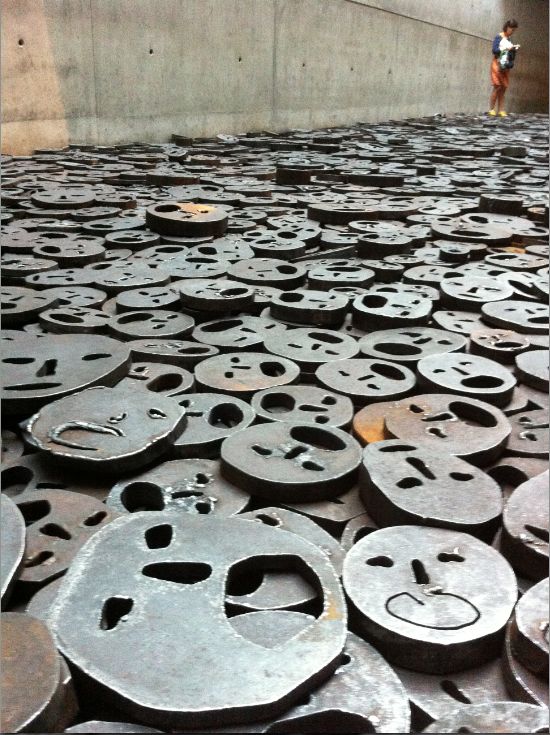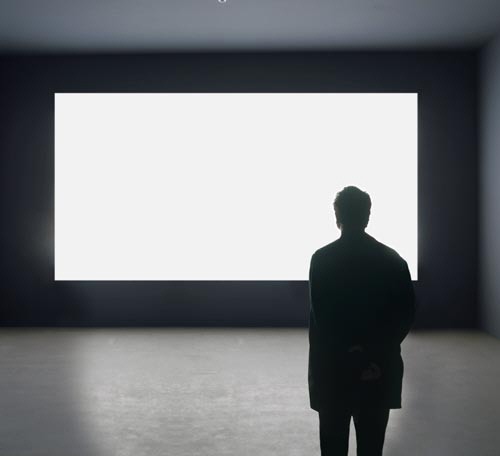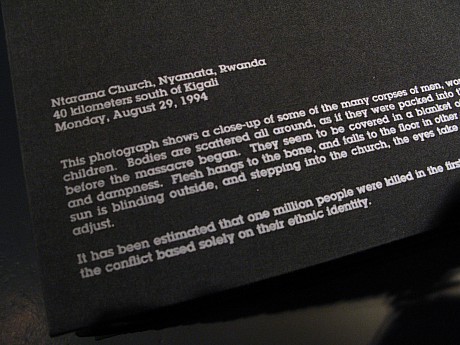Acredito no espaço público como extensão de nossas casas. Outro dia percebi que em alemão a palavra usada para praça (Platz) é a mesma usada para lugar (Platz). Fiquei feliz e surpresa quando, no trem, me perguntaram se aquele era o meu lugar (Platz). Respondi que sim e pensei, então a praça é o meu lugar!?. Não só a praça, mas o espaço público que só tem sentido de existir quando apropriado. Era isso o que eu não encontrava na minha rotina em São Paulo e foi exatamente isso que encontrei em Berlim. Uma cidade que te aceita e aceita ser apropriada descaradamente. E hoje, quase meia noite, encontrei um bom exemplo na apropriação da parede de trás de um supermercado. Alí, a simples projeção trouxe vida pra aquele lugar (Platz) já apagado e sem uso. E lá as pessoas paravam, olhavam, sorriam e deviam enfim seguir para suas casas, ou melhor para seus quartos, porque a cidade é a sua casa, seu lugar, seu ‘Platz’.
I believe in the public space as an extension of our homes. Other day I realized that in German the word for ‘square’ (Platz) is the same used for ‘place’ (Platz). I was surprised when, in the train, someone asked me if that was my place (Platz). I answered yes and thought, then the square is my place!? Not only the square, but the public space in general, that only makes sense when appropriated. This was what I did not have on my rotine in São Paulo. This is what I find everyday in Berlim. A city which accepts you and accepts to be insistently appropriated. Today, almost mid night, I found an example of this approppriation on the parking lot’s wall of a supermarket. There, a simple projection brought life to the already unused place (Platz). There, people stopped, watched, smiled and probably followed to home, or rather, followed to their rooms, because the city is their home, their place, their Platz.
Postado por: Taícia
Data: 16.08.2012 Categorias: Texto Tags: , Alemanha, Berlin, Cotidiano
Comentários »
Quando vim à Berlin pela primeira vez fui direto ao museu Judaico. Ele estava fechando, mas senti a necessidade urgente de voltar no dia seguinte. Voltei e me impressionei. Uma arquitetura que faz com que você se sinta, como eu nunca pude imaginar, no holocausto, no exilio e repleto de incertezas a respeito da continuidade das nossas vidas. Final de semana passado voltei mais uma vez. Senti tudo de novo, no holocausto, exilada e incerta a respeito da vida. Decidi que iria além e andaria sobre a brilhante e terrível obra de Menashe Kadishman. Shalekhet (Folhas caidas) preenche com 10,000 faces de metal um dos vazios deixados por Daniel Libeskind em memória dos mortos durante o holocausto. Ao caminhar sobre as faces fazemos com que elas ganhem voz. Mas as vozes gritam, choram e ecoam no vazio e nos fazem sentir a cada passo a dor e o drama de cada folha caída. Brilhante e terrivel. Impressionante sentir como arquitetura e arte são capazes de nos posicionar em um mundo que não conhecemos, nos fazendo refletir ao ‘calçar o sapato do outro’.
When I visited Berlin for the first time I went straight to the Jewish Museum. It was closing but I felt the urgent need to return the next day. I went back and was impressed. The architecture made me feel as I counld never imagine, in the Holocaust, in the exile and full of uncertains about the continuity of my life. Last weekend I returned once more. I felt everything again. In the Holocaust, exile and the uncertanties. I decided I would go further and step upon the brilhant and terrible installation by Menashe Kadishman. Shalekhet (Fallen Leaves) occupy with 10,000 metal faces one of the voides left by Daniel Libeskind in memory of the dead during the Holocaust. When walking on the faces they gained voice. But the voices were screaming, crying and echo in the emptiness and made me feel at every step the pain and drama of each fallen leave. Brilhant and terrible. Impressive to feel how architecture and art are able to position us in a world we do not know, making us reflect by ‘wearing the shoes of others’.

Data: 08.08.2012 Categorias: Arte, Exposição, Viagem Tags: , Alemanha, arte, Berlin, exposição, holocausto, museu
Comentários »
Sou uma pessoa absolutamente visual e surda (surda não de verdade, mas sou). Nunca achei que a ausência de imagens e a presença de palavras pudessem falar tão alto aos meus olhos sempre abertos e ouvidos surdos.
Isso é o que Alfredo Jaar faz em ‘The way it is. An Aesthetics of Resistance’.
I am totally visual and deaf (not really deaf, but I am). I have never imagined the absence of images and presence of words would be able to talk so loud to my, always, open eyes and deaf ears. This is exactly what Alfredo Jaar does in’The way it is. An Aesthetics of Resistance’.
Exposição cooperativa que acontecerá nesses três locais em Berlin.
Postado por: Taícia
Taícia Marques é arquiteta, urbanista e paisagista e atualmente mora, trabalha e se diverte em Berlin.
Data: 10.07.2012 Categorias: Arte, Dicas, Exposição, Viagem Tags: , arte, Berlin, exposição, viagem
Comentários »


